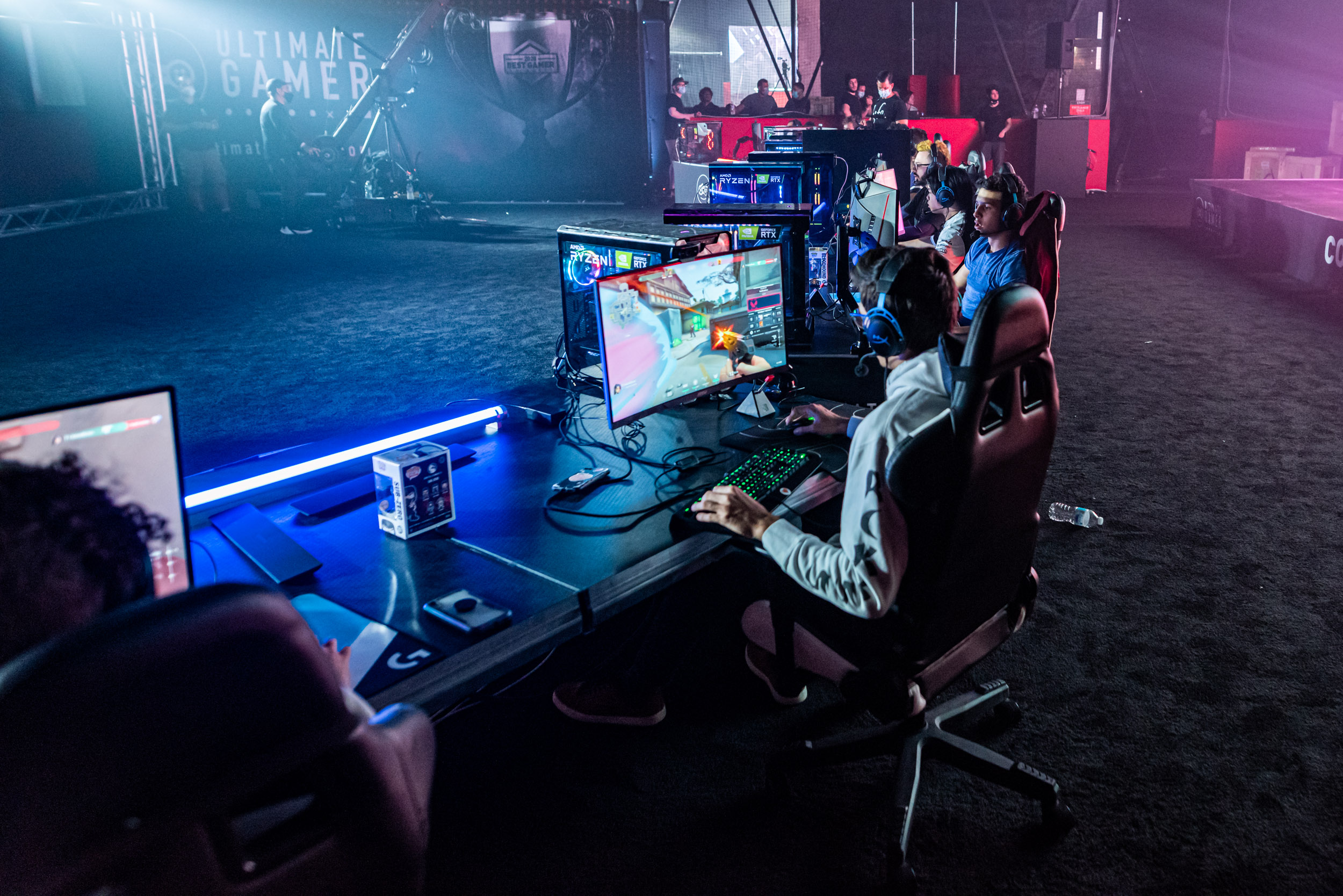Looking to overhaul the traditional esport tournament format, veteran live event producer and Black Stage Productions founder Steve Suarez created the cross-genre video gaming championship Ultimate Gamer. The series challenges gamers around the world to compete in first-person shooter, fighting, sports, battle royale, and multiplayer online battle arena tournaments for a chance to earn the title of “Ultimate Gamer.”
For its first-ever “Valorant” LAN tournament, which took place over the course of three days this summer in Miami, Suarez live streamed all of the action to fans worldwide via social media platforms. Using an AJA Ki Pro GO multi-channel H.264 recorder/player provided by systems integrator CineSys-Oceana, his team also captured highlights footage for integration into the three-day stream.
The ability to live stream the event was paramount to its success, allowing Ultimate Gamer to limit the number of people on-site in Miami and practice safe social distancing while still reaching its international fan community. By the event’s end, the team had streamed more than 30 hours of gaming from 10 players to Twitch, YouTube, Facebook, and Periscope.
Concurrently, footage was recorded in real-time to USB drives as high quality H.264 files using the Ki Pro GO and passed onto the editorial team intermittently throughout the event. Editorial used the files to cut replays and highlights for inclusion into the stream. All recordings were archived and will be used to create original programming that Ultimate Gamer is developing for broadcast and OTT providers.
Developed by CineSys-Oceana technical specialist Javier Mendez, Ultimate Gamer’s workflow included three Sony cameras for acquisition, including two on jibs and one over the shoulder, which captured footage of the players and tournament hosts on-site. Each player’s gameplay feed, whether via Sony PlayStation or Nintendo Switch, was integrated into the feed for live switching, after being converted to SDI using AJA FS-Mini Mini-Converters.
[Download the Integration Guide to Esports]
A first-person view, shot via a webcam from each player’s computer, was transported via NDI for integration into the feed as well. Ki Pro GO recorded all three camera feeds and the 1080p HD gameplay feed directly from a Newtek Tricaster video production system.
“Recording each feed directly to USB media with Ki Pro GO is so convenient. We can quickly hand off the drives to our editors, who are mostly freelance and working off of a laptop, and they can get to work right away with high quality files in their NLE of choice, whether Adobe Premiere Pro or Apple Final Cut Pro. Within an hour we’re able to fold match replays or highlights into the stream,” said Mendez. “Being able to control and configure the device from a web-browser is also huge, and with the new 10-bit support in the latest firmware release, we can be confident that every time, we’re capturing high quality video with no risk of downtime.”
Underscoring the importance of finding new ways to connect the gaming community during a crisis like the COVID-19 pandemic, Suarez concluded, “Video gaming brings people together and often provides a much needed distraction from the real-world, and with Ki Pro GO we’re able to capture our tournaments and deliver high-quality video content to our global audience. It’s truly a reliable plug-and-play solution, so we never have to worry about technical issues, and we’ve received positive feedback from the entire production crew and editorial team.”
